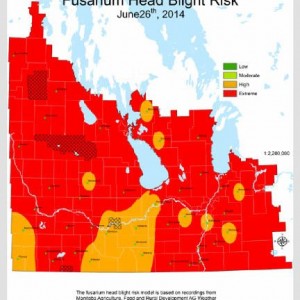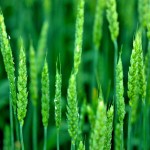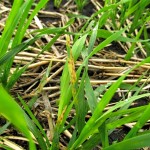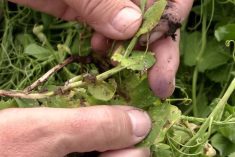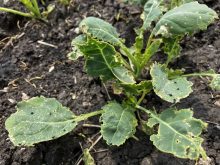The fusarium head blight risk in most of Manitoba was rated “extreme” June 26 by Manitoba Agriculture, Food and Rural Development (MAFRD) and was expected to remain that way this week.
“People should be getting prepared to protect their (winter and spring wheat) crops (with a fungicide),” MAFRD plant pathologist Vikram Bisht said in an interview last week. “Winter wheat is extremely susceptible to fusarium head blight. It normally escapes, but this year we have interesting weather.”
Although many crops are behind because of the cool, wet conditions, winter wheat crops are heading and it won’t be long until they flower. Early-seeded spring wheat is isn’t far behind.
Plant diseases require three conditions to thrive — a source of inoculum, a host and the right environmental conditions. All three exist for fusarium head blight, a fungal disease that can dramatically cut wheat yields and quality.
- From the Alberta Farmer Express: Alberta’s fusarium action plan
Fusarium thrives under moist conditions when temperatures are 15 to 30 C for 48 to 60 hours.
Cereal crops — barley, oats and rye, as well as winter and spring wheat — are susceptible to fusarium at the flowering to soft-dough stage.
For optimum fusarium suppression, apply a registered fungicide when at least 75 per cent of the heads are fully emerged to when 50 per cent of the heads on the main stem are in flower, MAFRD’s 2014 Guide to Crop Protection says.
The guide says spray equipment must be set to provide good coverage to heads (forward- and backward-mounted nozzles, or nozzles that have a two-directional spray).
Currently registered fungicides only suppress fusarium rather than control it. That makes application timing critical, Bisht said.
Fungicides work even better when combined with varieties more tolerant to fusarium.
There are other things farmers can do to reduce the risk. One is to discourage tillering so wheat fields flower more evenly, making it easier to time a spray application. Heavier seeding rates and deeper seeding reduce tillering, Bisht said.
Read Also

Manitoba canola industry has new frontiers
Canola oil is still the main priority for the sector, but canola meal is increasingly the subject of research looking for new markets and uses for the oilseed’s byproduct.
“If you spread your flowering you have a higher risk of getting something, but have a lower risk of everything going bad because you miscalculated on the timing (of a fungicide application),” he said.
- For optimum fusarium suppression apply a registered fungicide when at least 75 per cent of the heads are fully emerged to when 50 per cent of the heads on the main stem are in flower. Photo: Vikram Bisht, MAFRD
- This field of wheat photographed in June, seeded into wheat stubble, is infected with tan spot. Photo: Vikram Bisht, MAFRD
The first line of defence is crop rotation — not planting wheat after wheat or wheat after corn, which is also susceptible to fusarium.
The next step is selecting varieties that are more fusarium tolerant. No wheats in the Western Canadian Red Spring class are resistant to fusarium (see 2014 Seed Manitoba) but a number are moderately resistant.
Four out of seven Canada Western Red Winter wheats are susceptible to fusarium, one is moderately resistant, one has intermediate resistance and one — Emerson — is resistant.
Despite the wet conditions, Bisht hasn’t seen a lot of leaf disease in winter wheat yet. However, he has seen some tan spot in spring wheat planted on wheat stubble.
Unless the infection is severe, it often doesn’t pay to apply a fungicide to control leaf diseases early in spring wheat, he said. It’s important for yield though to keep the flag leaf healthy.







